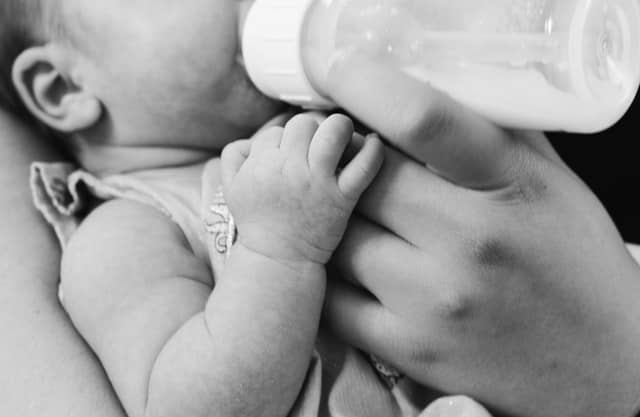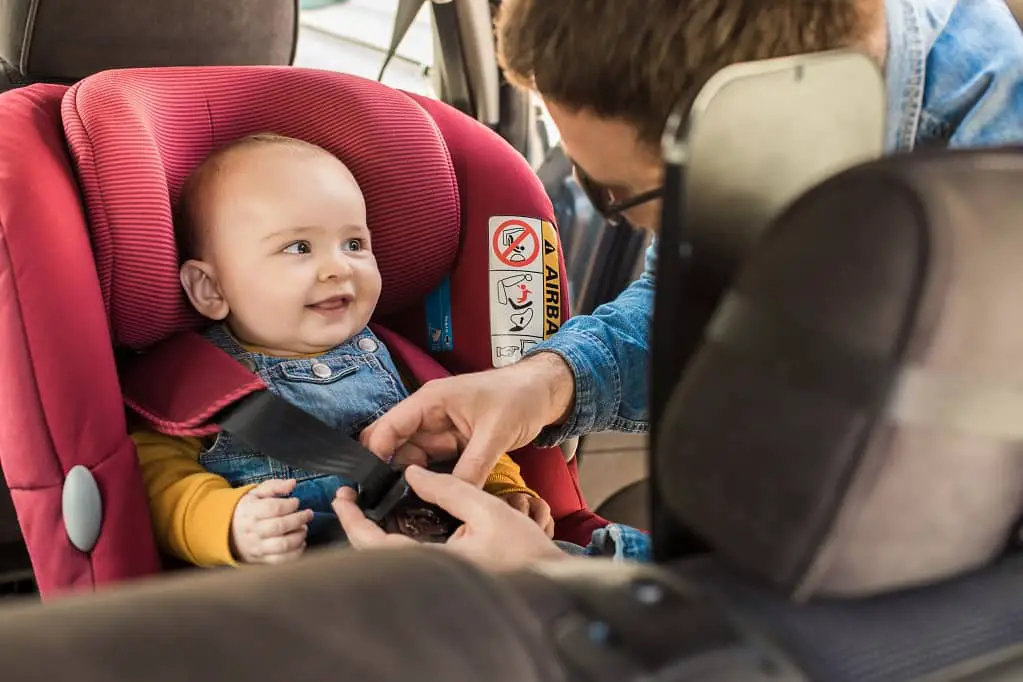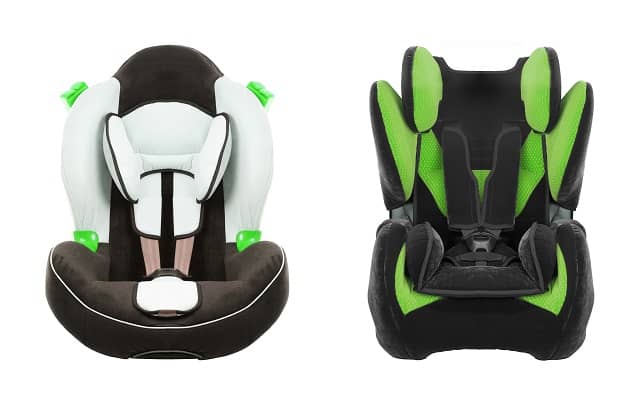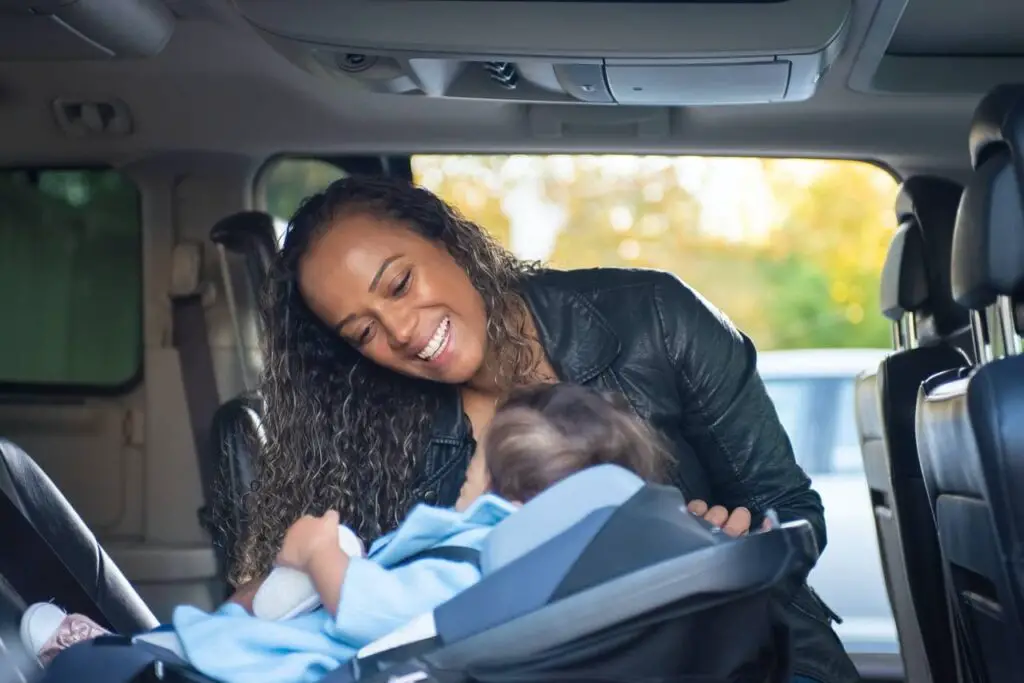What Works and What Doesn’t?
As nature will have it, one of the fundamentals of life is feeding. Have you thought of it once, that what if we don’t have to eat to be alive?
Well, while that isn’t happening anytime soon, your newborn will need a source of energy to kickstart their life, and that will come from feeding.
Now, how safe or convenient can it be to feed your infant when on a ride? Or rather, can you feed a baby in a car seat?
It is inevitable, you must feed your baby. But when, where, how, and is it safe?
This article will guide you extensively on every aspect of bottle feeding a baby in car seat, natural rules, safety rules, convenient methods, and most importantly, practical examples you’ll watch.
You can use the table of contents below to get to the section you’d be most interested in, or you can take a little more time to read the article.
Legal Standing On Feeding a Baby in a Car
Can You Feed a Baby in a Car Seat?
While it is legal to breastfeed a baby in public in all 50 states, it is different when it comes to a vehicle in motion. It is not legal to breastfeed a baby in a car when in motion as this violates the vehicle safety belt and child restraint system laws in all states – all passengers of a moving vehicle must be properly and securely restrained by the appropriate type of restraint system.
Now that brings us to the next, bottle feeding.

Can You Bottle Feed A Baby In A Car Seat?
When you plan a trip, you can breast pump into a feeding bottle that you will use during the trip. If the baby has learned to hold a bottle or with a baby bottle holder that can be hung from an infant seat, this will help. But, you will still need to make stopovers to burp after feeding. However, this is called bottle propping, and it is not recommended as you will learn why soon.
Safety Concerns About Feeding a Baby
There are other safety concerns to be aware of when contemplating feeding a baby in a car, be it with a feeding bottle or after a meal in general.
1. Dangers of projectiles in the event of a crash – Keeping objects secured in a vehicle is always recommended.
As little as an object can be, say a feeding bottle, toy, cell phone, etc., they could become very dangerous when there’s an accident, and these loose objects come flying at a very high speed.
Cafemom here narrates a very touching incident where the little boy had a sippy cup in his hand that came off as a projectile during an accident.
There are also other reports of projectiles in a crash. You want to avoid having any object that could come off as unsafe in the event of a crash or impact, feeding bottles inclusive.
2. Choking incident and stomach upset – Do you know choking is the fourth leading cause of unintentional death among children less than 5 years? At least one child dies from choking on food every five days in the US.
Choking results when food (liquid or solid) gets stuck in the throat (trachea). So, you want to be aware of the type of food you feed your child or what you do next when they feed liquid.
When feeding (eating too much or swallowing air) leads to reflux (which can be normal), it could lead to spitting up where a baby brings up milk and, in rare and possible cases, cause a choking hazard.
Note, spitting up, and reflux are common for children under 1 year when their digestive system is still developing.
3. Distraction while driving – The last thing you want while driving is losing concentration on the steering. You don’t want to be looking into the rear mirror instead of the windshield.
More so, reflux can cause the baby to scream or cry, which can also distract you and discomfort them.
These are safety concerns you want to be aware of before contemplating feeding your baby in a car generally.
What Then Can You Do?
The ideal thing will be to plan your trip before leaving the home and see how long it will take to arrive at your destination, how many stops you can make, and the convenient places you can pull over while on your trip.
If you think you can wait till the next stop or your destination while on the journey, better. But don’t try to feed your baby while in motion.
Consider feeding your baby before leaving the home if it is a short trip so you can be at your destination before he gets hungry again.
If it is an absolute must to feed the baby while on the trip, the following can help on how to feed a baby in a car seat.
How To Feed a Baby in A Car Seat
Permit me to start from a reverse, but whichever way, you will still need to bring out your baby from the car seat after feeding to burp.
When it’s time to feed your child, find a safe, free, spacious, and quiet space to pullover, gently unstrap your baby from the car seat and let’s begin;
Feeding Options
1. Breastfeeding – This is the most natural way to bond with a baby, as research has shown that children who were breastfed displayed the lowest risk of internalization problems.
When you pull over and get your baby out of the car seat, take a calm upright position and begin breastfeeding. Ensure to burp your baby when you change breasts. This is to prevent reflux. Also, feed less. Try not to overfeed them.
2. Bottle-feeding – This is a more convenient way to feed a child, and usually, you may be tempted to prop a bottle so you can be engaged in other things, maybe continue driving. Take off the idea. DON’T prop the bottle.
Associated dangers with propping a bottle include choking hazard, unregulated milk flow, increased risk of ear infections, and late help when you need to quickly get your child out of the car seat to burp. However, there are safe practices for bottle feeding a baby in a car seat:
- Prepare a baby feeding table that can be used with the car seat (I’ve included the best so far from my research in the next section).
- Check that the bottle nipple hole is the right size. It should not make your baby gulp too much milk at once or swallow air (if the hole is too small).
- Position the bottle in an angle that your baby doesn’t swallow air.
- Burp your baby every 3-5 minutes.
- After feeding, let your baby remain settled in an upright position for up to 30 minutes. This is so their stomach can settle.
- Then you can return your baby to the car seat and secure properly.
3. Solid feeding – if your child has begun taking solid food, then you can feed him that while on the trip, during a stop.
New York state enacted a legislation to help parents prevent choking hazards. The law recommends some food that a child shouldn’t eat to avoid choking. They include popcorn, chips, snack food, candy, lollipops, and marshmallows, A full list as obtained from the Department of Health, New York State, is provided below this article.
From other mothers’ experience, pulling over every 2-4 hours was helpful in feeding their babies. There is the 2 Hour Rule you should be aware of as a parent. A child should not be in a car seat for more than 2 hours, as recommended by car seat manufacturers.
How To Burp Your Baby
After you may have fed your child, you need to burp them. This is quite easy.
UNICEF recommends 3 techniques many parents use;
- Over the shoulder – hold your baby in an upright position with their head resting against your shoulder while you gently pat over their back with your other hand.
- While sitting on your lap – sit up your baby on your lap while supporting their chin and chest with one hand. Use your other hand to rub or pat their back.
- While lying across your lap – rest your baby faced down on your lap and gently pat their back.
Video guide from UNICEF –
Convenient Means to Feed Your Baby
Graco Swivi Seat – 3-in-1 Booster High Chair
Features:
- Swivels and rotates conveniently, which is great for feeding a baby.
- Infant cradle recliner
- Material: Plush
- Dimension: LxWxH 24 x 20.4 x 22 inches
Chicco Caddy Hook-On Chair
Features:
- Folds flat – suitable for travel
- Material: Nylon
- Dimension: LxWxH 25.3 x 14.2 x 14.3 inches
Safe Foods to Feed a Baby in a Car Seat?
Since we are talking about baby car seats, that means the baby is on a ride with you, either on a grocery shopping or on a vacation trip.
In essence, there are safer foods to feed a baby in a car seat while traveling.
Before we delve far, here’s an article about a baby traveling by car.
Back on board, the following are compiled lists of easy to eat food with quicker/slower digestion as recommended by Firstcry Parenting;
Babies/Infants (under 12 months):
- Baby food
- Milk
- Fruit purees
- Carrot Cake
Toddlers (1 – 2 years):
- Yogurt
- Cereal
- Eggs
- Hummus
- Thepla
- Granola Bars
Food Not Recommended to Feed Your Child
The Department of Health, New York State and the American Academy of Pediatrics on Choking Prevention recommends that the following food should not be given to children under 4 years:
- Hot dogs (especially cut into a coin shape), meats, sausages, and fish with bones
- Popcorn, chips, pretzel nuggets, and snack foods
- Candy (especially hard or sticky candy), cough drops, gum, lollipops, marshmallows, caramels, hard candies, and jelly beans
- Whole grapes, raw vegetables, raw peas, fruits, fruits with skins, seeds, carrots, celery, and cherries
- Dried fruits, sunflower seeds, and all nuts, including peanuts
- Peanut butter (especially in spoonfuls or with soft white bread)
- Ice cubes and cheese cubes
- Foods that clump, are sticky or slippery, or dry and hard textured
Final Wrap Up
While it is legal to feed a baby in a car seat, it should be done in the right way as recommended in this article; plan a pull over, unstrap from car seat, feed light, feed right, burp, relax, then continue the trip.
I do hope this was a helpful guide for you.
Do leave your feedback or questions in the comment box.
Cheers to a happy parenting.



